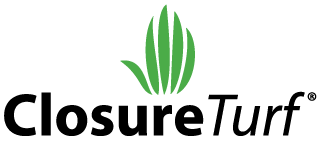Crazy Horse Landfill
MSW Landfill

LOCATION
Salinas, CA
Owner
Progressive Waste Solutions
Engineer
Golder Associates
Contractor
Salinas Valley Solid Waste Authority
Size
66 Acres
Date completed
2014
The Crazy Horse Landfill (CHLF), owned and maintained by the Salinas Valley Solid Waste Authority (SVSWA), had been in service for 75 years, with final in-place waste volume estimated at 4.3 million cubic yards. In 2013, final cover design for the closure of the of the CHLF went through three iterations before the SVSWA settled on the ClosureTurf system. The project marks the first large-scale implementation of ClosureTurf in California.
The CHLF began operation in 1934 as a burn dump and continued that operation until 1966 when it was converted to a sanitary landfill operation. In 1990, it became a Superfund site and continued to receive non-hazardous residential, commercial and industrial solid waste until December 2009, when the SVSWA ceased all fill operations and began the process of closure.
Because of site conditions, the SVSWA’s final cover system would have to meet five main criteria:
- The system would have to withstand the environmental conditions present including wind erosion and uplift, rainfall erosion, concentrated flow erosion, ultraviolet light degradation and traffic.
- The system had to provide a static factor of safety of at least 1.5 and resist seismic deformation due to the San Andrea Fault zone located about five miles northeast of the site.
- The final cover system had to provide excellent groundwater protection to halt continued impact to the local groundwater supply.
- Due to an old cross-traffic style highway interchange, risk to motorists had to be avoided during construction.
- The new system could not create additional nuisance conditions for nearby residents, many of whom had been concerned about the landfill site operations and impacts for years.
The SVSWA evaluated several closure systems including an evapotranspirative cover system, a prescriptive cover utilizing a textured geomembrane and a prescriptive cover utilizing a structured geomembrane. However, getting vegetative cover soil to the site proved financially prohibitive at an average of $13/cy. The SVSWA was then introduced to the ClosureTurf technology, which was relatively new at the time. The primary regulating agency and design engineer requested some additional testing such as wind erosion and uplift. They found surprising results in that the system became a downward force at higher wind speeds (up to 120 mph or Category 3 hurricane wind speeds). This was important because the design wind speed for the Pacific coast was 85 mph in 2010. With rainfall erosion also being a concern, ASTM testing confirmed that no sand loss occurred at 2.63 in and 4.65 in of rainfall per hour. For concentrated flow areas, a cement infill called HydroBinder® was used to increase hydraulic shear resistance up to a measured 15 psf (equivalent to a 12-in D50 riprap). In addition, tests were conducted on UV resistance and trafficability, all of which ClosureTurf performed well on.
Ultimately, the SVSWA chose ClosureTurf due to the fact that it met all five criteria, and the cost fell within their budget of available closure funds. The annual post-closure maintenance was estimated at $46,000 per year. ClosureTurf reduced these annual costs by approximately 80%. The total savings over a nominal 30-year post-closure period is projected at $1.4 million.
In addition, ClosureTurf eliminated about 11,000 truck trips to import soil to the site. The project’s carbon footprint was reduced by 80% due to the combined project size reductions of soil import elimination and reduced heavy equipment needs.
Most importantly, the closed landfill has had a positive impact on the local neighbors. The site is now barely discernible from the natural hillside, and aesthetic and odor complaints from neighbors have ceased. In fact, many have contacted the SVSWA to compliment the appearance of the site.
